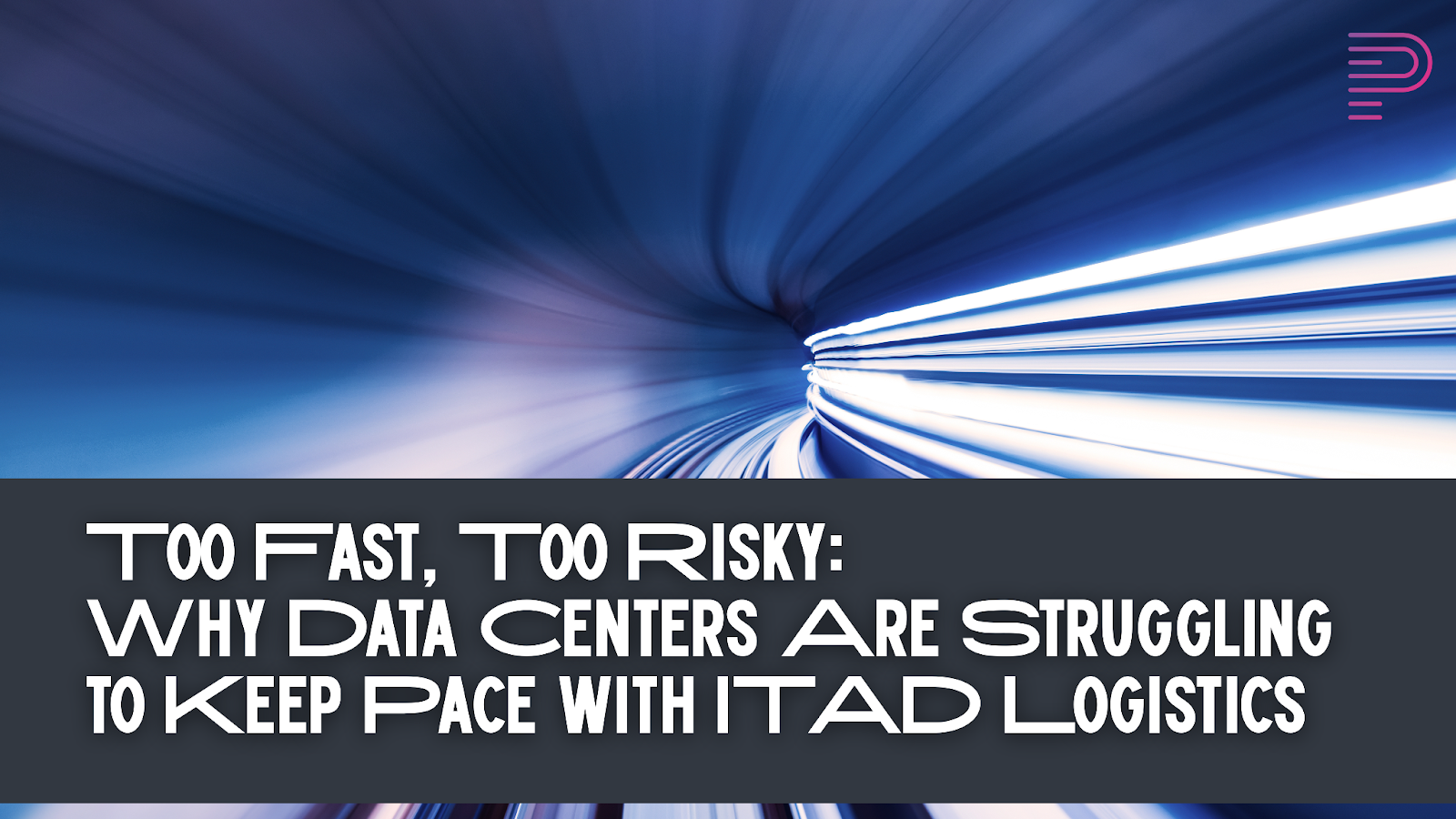
Too Fast, Too Risky: Why Data Centers Are Struggling to Keep Pace with ITAD Logistics
What happens when your servers age faster than your logistics team can retire them? In today’s hyperscale economy, data center decommissioning has become a critical challenge. Data centers are built to be fast… fast to compute… fast to scale, and fast to refresh. But the pace at which hardware becomes obsolete is outpacing the strategies companies have in place for fast ITAD services that ensure equipment is disposed of securely and sustainably. In that gap, risk multiples.
Gone are the days when a data center server could comfortably hum along for 5 to 7 years. According to the Uptime Institute’s 2023 Server Lifecycle Report, the refresh cycle for core infrastructure has shrunk to just under 3 years, and in AI-intensive operations, that cycle can be as short as 18 months. The pressure to upgrade is relentless. From GPUs optimized for machine learning to solid-state storage designed for ultra-low latency, each generation promises higher efficiency and demands faster swap-out schedules. Which in turn demand more agile data center decommissioning and fast ITAD services.
But decommissioning is rarely treated with the same urgency. ITAD, the process of retiring, wiping, transporting, auditing, and either recycling or reselling hardware, remains stuck in a slower gear. The result? Piles of unused or partially processed equipment accumulate in staging rooms, unused racks, and offsite holding warehouses, becoming both a financial liability and a potential security threat.
These delays aren’t just logistical headaches. They bleed capital. Servers that sit idle for weeks after decommissioning lose resale value by the day. And if they’re not handled promptly, that’s assuming resale is even possible, delays often result in missed windows for aftermarket value recovery, forcing organizations to scrap units that could have been refurbished or remarketed. According to Gartner, failing to resell IT hardware within 60 days of decommissioning can result in up to a 40% drop in potential asset value.
Then there’s the compliance nightmare. Regulatory frameworks like NIST, ISO 27001, and national privacy laws require full documentation of how data-bearing assets are handled. When ITAD lags, so does the documentation. Chain-of-custody records become incomplete. Certificates of data destruction arrive weeks late, or not at all. This is where secure asset tracking is essential. The longer the equipment remains unmanaged, the more likely it is to end up lost, misidentified, or improperly wiped—exposing companies to massive fines and reputational damage.
Take the case of a well-known financial firm that faced a $7 million penalty after hard drives, meant to be destroyed, were found resold on the secondary market with client data still intact. The root cause? A lag in decommissioning schedules that allowed drives to be handled outside of certified ITAD protocols.
The rise of distributed infrastructure compounds the issue. With more organizations utilizing multiple co-location facilities, edge data centers, and cloud migration strategies, coordinating hardware disposition across locations is a herculean task. Even mid-sized companies now manage hardware inventories across multiple continents. Coordinating fast ITAD services in such environment is a logistical feat.
The ideal solution? Speed meets structure. Forward-thinking IT departments are beginning to treat ITAD as a core component of lifecycle planning, not an afterthought to be addressed post-upgrade. That means working with partners who offer real-time visibility, leveraging secure asset tracking, and logistical scalability. Some enterprises are now leveraging platforms that integrate directly with their ITSM systems, enabling automated updates when a server is tagged for decommissioning and triggering secure pickup and processing workflows instantly.
Others are investing in on-site data destruction units that allow for same-day sanitization before equipment even leaves the premises. This not only reduces risk, but speeds up the overall timeline for resale or recycling. In markets where data localization is critical, on-site wiping combined with regional ITAD partners ensures compliance while maintaining velocity.
To manage the volume, many organizations are embracing batch-based decommissioning. Instead of retiring equipment piecemeal, they plan structured, scheduled waves that align with budget cycles, refresh plans, and available logistics capacity. This minimizes disruption and allows for coordinated tracking, wiping, and reporting.
Artificial Intelligence, itself is reshaping data center decommissioning. Advanced logistics platforms now use predictive analytics to model decommissioning timelines and preemptively identify choke points, whether it’s shipping bottlenecks, paperwork delays, or processing lags. By integrating secure asset tracking, these systems not only reduce downtime, they improve audit readiness by providing a real-time view of every asset’s status.
Still, it’s not just about tech. Organizational discipline is essential. IT leaders must ensure that ITAD protocols are included in SLAs, vendor agreements, and internal KPIs. Procurement should evaluate equipment vendors based on their ability to support fast ITAD services. And executive leadership needs to support investments in secure, scalable logistics because delayed disposal is inefficient and dangerous.
In a world where hardware moves faster than ever before, the companies that excel at data center decommissioning will gain a measurable edge. With fast ITAD services, they can recover more value, stay compliant and strengthen security. Add in secure asset tracking, and organizations close the loop with transparency and confidence.